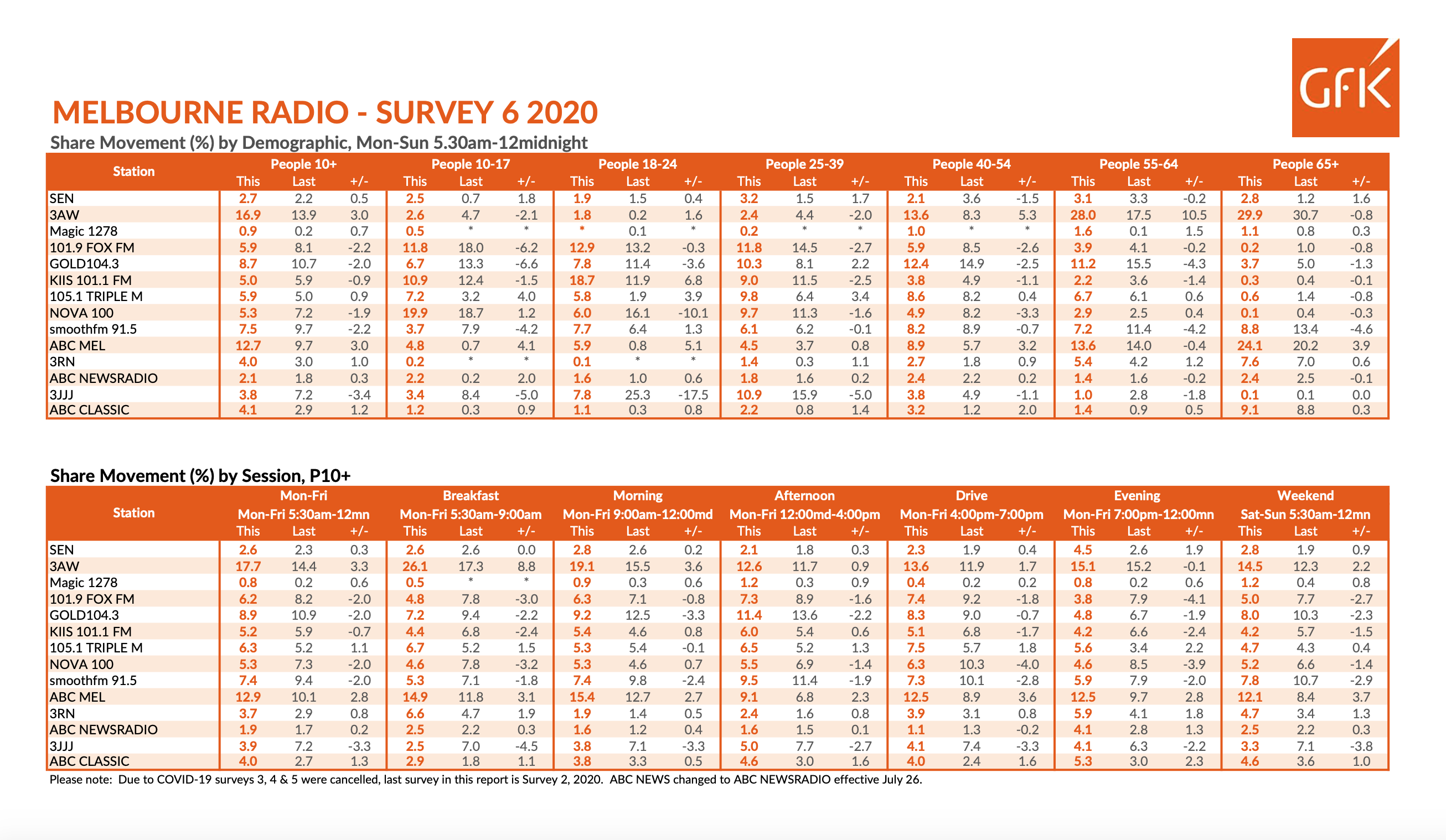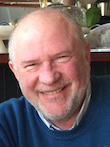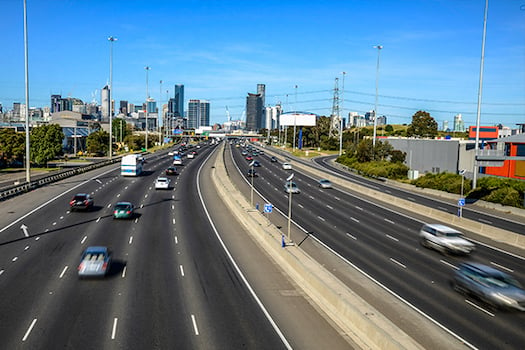Peter Saxon plays in the traffic.
To summarise Part One of our analysis of Survey 6 and the impact COVID-19 has had on radio listening habits:
- Melbourne, with by far the highest infection and death rates in Australia, has been forced to endure a severe lockdown that’s been in operation for several months and is likely to continue for at least another. There was a huge listener migration from FM to AM.
- Sydney has been far less impacted but has experienced some audience movement nonetheless.
- In Brisbane, Adelaide and Perth, however, “You could ask, was there actually a pandemic?”, asks ARN’s Duncan Campell.
Nova Entertainment’s Paul Jackson agrees, “Looking at the other marketplaces…yes, we’ve missed a few books but picking up from this point, everybody’s pretty much in line, I would have thought, with where they were last time.”
In Melbourne, listeners flocked to AM talk in prodigous numbers. In fact, every AM station increased its share while every FM station lost serious ground – except for one, Triple M. SCA’s Dave Cameron couldn’t be more pleased. “The hot breakfast is very focused on news and information breaking stories and so that makes complete sense.”
Even Duncan Campbell is impressed. He says, “The Triple M result in Melbourne is pretty good. It became sort of the talk station of the under 50s, if you like. He (Eddie McGuire) shifted to not just just a sports focus but a pandemic focus as well.”
Conventional wisdom has it that AM talk will slowly fade away as its predominently 55+ listeners die out. Younger FM listeners, on the other hand, won’t be attracted to stations on the AM band because it’s ‘grandpa’ technology. Well, apparently plenty of them found 3AW and ABC Melbourne in Survey 6. AW increased its share of 40 – 55 year olds by 5.3 to take it to an unprcedented number one in that demographic. The ABC too, found an extra 3.0 share points among 40-55’s.
Yet, while every other FM station was bleeding 40-54’s to the AM juggernauts, Triple M gained in that age group as well as in every other demographic except 65+. Did youth desert them? No, the station’s strongest gain was in 10-17s. Go figure.

Of course, one survey does not a trend make. And there’s little doubt that once COVID is gone things will return to normal.
Well, maybe not quite.
Listening habits will not return to pre-COVID norms unless social habits do.
The biggest question mark revolves around the daily commute.
“If we’re specifically talking about Melbourne as an example,” says Cameron, ”you will see that given there is a government direction to work from home and there is a restriction on not being able to move five kilometres outside of your bubble. And most schools haven’t been open for 16 weeks. You’ve seen a dramatic decline in in-car listening because there are no cars on the road.
“I can attest to that because I live here and the streets are dead.
“So when you’re removing car listening, that’s having a pretty catastrophic effect on music based stations that offer more of an entertainment product in breakfast.”
Campbell suggests, “My view is that (COVID) is an event that’s notg oing to become a permanent fixture. However, there will be some residual effects that will remain and mainly around the flexible working arrangements which will you know to some degree Impact in car listening but I think not to the level that we that we think it will.”
“I think you will always see cars on the road during commute time,“ says Cameron, ”Workplaces will return at some stage. I’m not sure about the ratio, whether it gets back to 80 per cent work from the office and 20 percent from home. I don’t think anyone can answer that question at the moment, but I do know that there will always be kids to drop off and pick up from school.”
Sydney, which has been relatively open for sometime is still experiencing a drop in vehicle traffic estimated to be aroaund 20 – 25 percent, which is one aspect of COVID that no one but toll-road operators and petrol stations are complaining about.
Anecdotally, as I walk the dogs around my neighbourhood, I notice that the front room of every 4th or 5th terrace house is set up as a home office with someone busy at the computer or on the phone.
As businesses, large and small, have been forced to adapt to social distancing with a portion of their staff working remotely, many have come to see its benefits. A large accountancy, insurance or law firm, for instance, that currently might occupy five floors of an office tower in the city, could reduce it to four and save hundreds of thousands of dollars in rent.
Working from home is not for everyone, but for those who can get the job done while enjoying the flexibility of attending to children and housekeeping and saving an hour or more of commute time, the improved work, lifestyle balance can be more valuable than an average pay rise.
In our Survey 6 Preview, the day before the results were know, I wrote: But COVID -19 has done much more to disrupt radio than simply enforce a five-month hiatus on the supply of survey results. Evidence suggests that with more people working from home and less people commuting, the long-accepted listening peaks of Breakfast and Drive are less steep while traditional workplace listening has increased. Moreover, with lighter traffic, those still in cars during Morning and Evening Drive are on the road for less time.
The chart above was presented by GfK following Survey 2 in April, to show how much listening patterns had changed since the pandemic had taken hold. The question now is not when will we get back to normal but to what extent will these new habits become normal?

Peter Saxon
Subscribe to the radioinfo flash briefing podcast on these platforms: Acast, Apple iTunes Podcasts, Podtail, Spotify, Google Podcasts, TuneIn, or wherever you get your podcasts.




